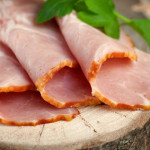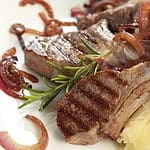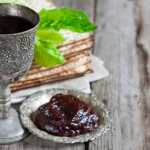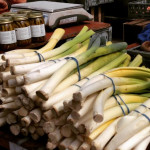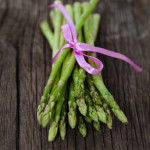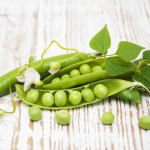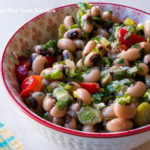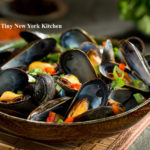Tiny New York Kitchen Wishes You And Your Family A Very Happy Easter!
Cooking Ham
Ham is a great choice for spring gatherings. It’s simple, feeds a crowd and provides wonderful leftovers.
Keep Servings In Mind. Allow for 1/2 to 3/4 pound per serving for bone-in ham, and 1/4 to 1/2 pound per serving for boneless ham.
Before Cooking make sure to let ham sit at room temperature for approximately 1 hour.
Scoring The Skin adds to a beautiful presentation. Cut 1/4 inch deep crosswise into 1 to 2 inch squares to create classic diamond shapes.
Glaze The Ham during the final hour of cooking to avoid burning.
Keep The Flavor Going. Buying bone-in ham leaves you with the ham bone, which is great for flavoring soups and beans.
“Work With What You Got!”
© Victoria Hart Glavin Tiny New York Kitchen
Cooking Lamb
Lamb is versatile and can be prepared quickly for a spur-of-the-moment gathering or roasted to perfection and served with a range of accompaniments.
Let The Cut Determine The Cooking Technique. For tender cuts like a rack, chops, loin, sirloin, or leg it’s best to broil, roast, grill, pan fry or sauté. For less tender cuts like shank or shoulder roast it’s best to braise or stew.
Store Lamb For 1-2 Days In The Refrigerator. Or you may freeze for up to 3 months. Thaw slowly in the refrigerator for a day or two before cooking.
Get Creative With Spice Rubs. Mix garlic, ginger, cardamom, cloves, chili pepper, and fenugreek for an Ethiopian style spice rub. Or create your own custom blend.
Always Test Doneness With A Meat Thermometer. Cook ground lamb to at least 160 degrees and other cuts to at least 145 degrees.
Make “Spring Burgers” With Ground Lamb. Season with dill, mint, or rosemary. Top with chopped fresh tomatoes and feta cheese.
“Work With What You Got!”
© Victoria Hart Glavin Tiny New York Kitchen
Palm Sunday
Find Joy In Each Day. – Saint Philip Neri
Here in New York City we’ve had a brutal winter. I’m so happy that spring is here at last. Farm to Table Leeks oh my! Bring on the spring and summer produce!
Asparagus
Nothing quite says spring like asparagus, which has a rather short season, which is typically from February to June.
Thickness really has nothing to do with quality. Asparagus is a perennial; more mature plantings tend to yield thicker stalks, and any size will be tender as long as it’s freshly cut. Look for bright apple green spears and tightly closed purplish heads; the stalks should be glossy, firm, and unwrinkled, with just a little white toward the base.
The question that many people have about Asparagus is whether to peel or not to peel. I believe it is quite unnecessary, and for the effort, it just doesn’t make noticeably more asparagus flesh available for eating. Instead, bend the cut end of each spear, snapping off the woody part where it breaks naturally (usually about two-thirds of the way down the stalk). The balance of the spear will be tender to the bite.
Extend the freshness of asparagus by keeping the spears hydrated. When you get the asparagus home from the market, trim the bottom 1/2 inch or so from each stem, and stand the bunch upright in a large coffee cup. Add water just to cover the ends of the stems, and then cover the top of the bunch with a plastic bag. Or you could trim 1/2 inch off the base of the stalks, wrap the bottoms in a damp paper towel, and slip the spears into a plastic bag, leaving the bag open. In either case, make sure to refrigerate the asparagus, adding more water to the cup or dampening the paper towel as needed. The asparagus should stay fresh for up to 3 days.
“Work With What You Got!”
© Victoria Hart Glavin Tiny New York Kitchen
Peas
There are several types of fresh peas, all of which are available nearly year round these days, but they are at their peak during the spring and early summer months. Like corn, the natural sugar in peas converts quickly to starch, so make sure to buy peas fresh, store them in the refrigerator, and use them within a day or two.
English shell peas are the familiar round green pea. Frozen tiny tender green peas, while enjoyable and convenient throughout the winter months, bear little resemblance to the texture and bright flavor of fresh peas. The springtime ritual of shelling peas is just as satisfying as shucking summer corn, and their flavor and texture are worth every minute.
When shopping for English peas, look for bright green smooth, succulent pods filled with evenly plump, round seeds. The freshness of the pods is an indication of the freshness of the peas. For the most reliable test, pop open a pod and taste a pea. Fresh peas should taste sweet and grassy. A pound of English shell peas in their pods yields about 2 cups of shelled peas, which translates into 2 to 3 servings.
Both sugar snaps and snow peas are edible pod peas. There is no shelling required. As their name implies, sugar snaps are delightfully sweet. Sugar snaps are delicious raw, but their flavor is enhanced with a brief cooking. As with all other peas, look for bright, smooth, succulent, tender green pods with fresh looking stems.
Happy Spring!
“Work With What You Got!”
© Victoria Hart Glavin Tiny New York Kitchen
What a wonderful time on Martha’s Vineyard this week. What could be better than stopping at Black Dog Bakery for a batch of fresh pastries?!


